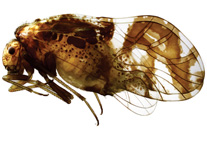Abstract
Ischnocnema paranaensis (Langone & Segalla, 1996) was described on the basis of a specimen collected in 1988 in a high-altitude site in the Atlantic Forest of the state of Paraná, southern Brazil (Langone & Segalla 1996). Since then, no additional records of the species have been obtained, despite being searched for multiple times shortly after its description (Eterovick et al. 2005). Several surveys at high altitudes in Paraná (e.g. Alves et al. 2006, Langone et al. 2008), some of which in the same region where the type was collected (Ribeiro et al. 2005, Fontoura et al. 2011), also failed to find this species. The species was therefore considered endangered in the state of Paraná (Segalla & Langone 2004), and the possibility that it had disappeared from the highlands was also considered (Eterovick et al. 2005). A species without any records for nearly 30 years should be sought mainly at its type locality, yet, the location of the type locality was incorrectly reported in the original description. Therefore, we here rectify the type locality of I. paranaensis.

